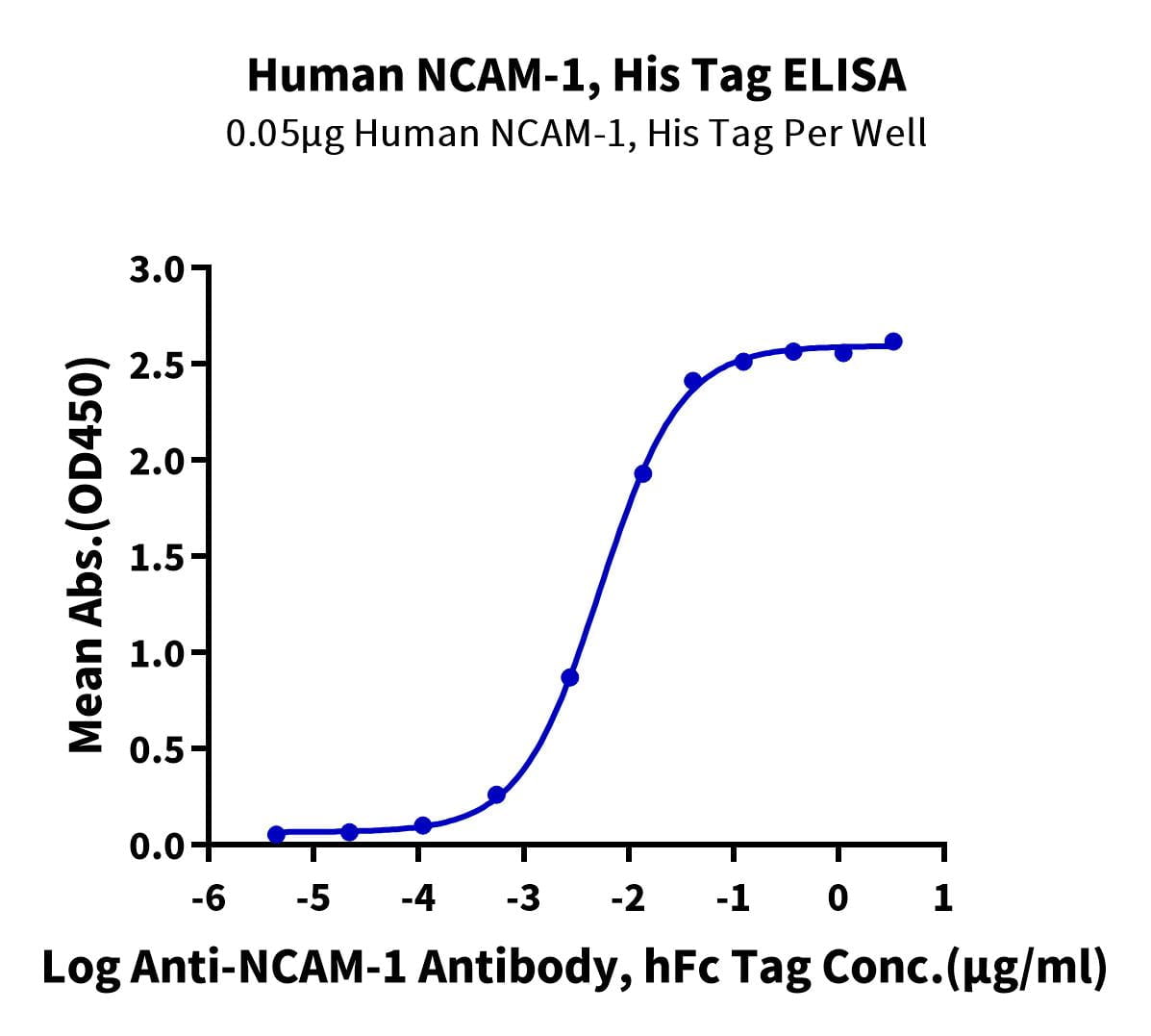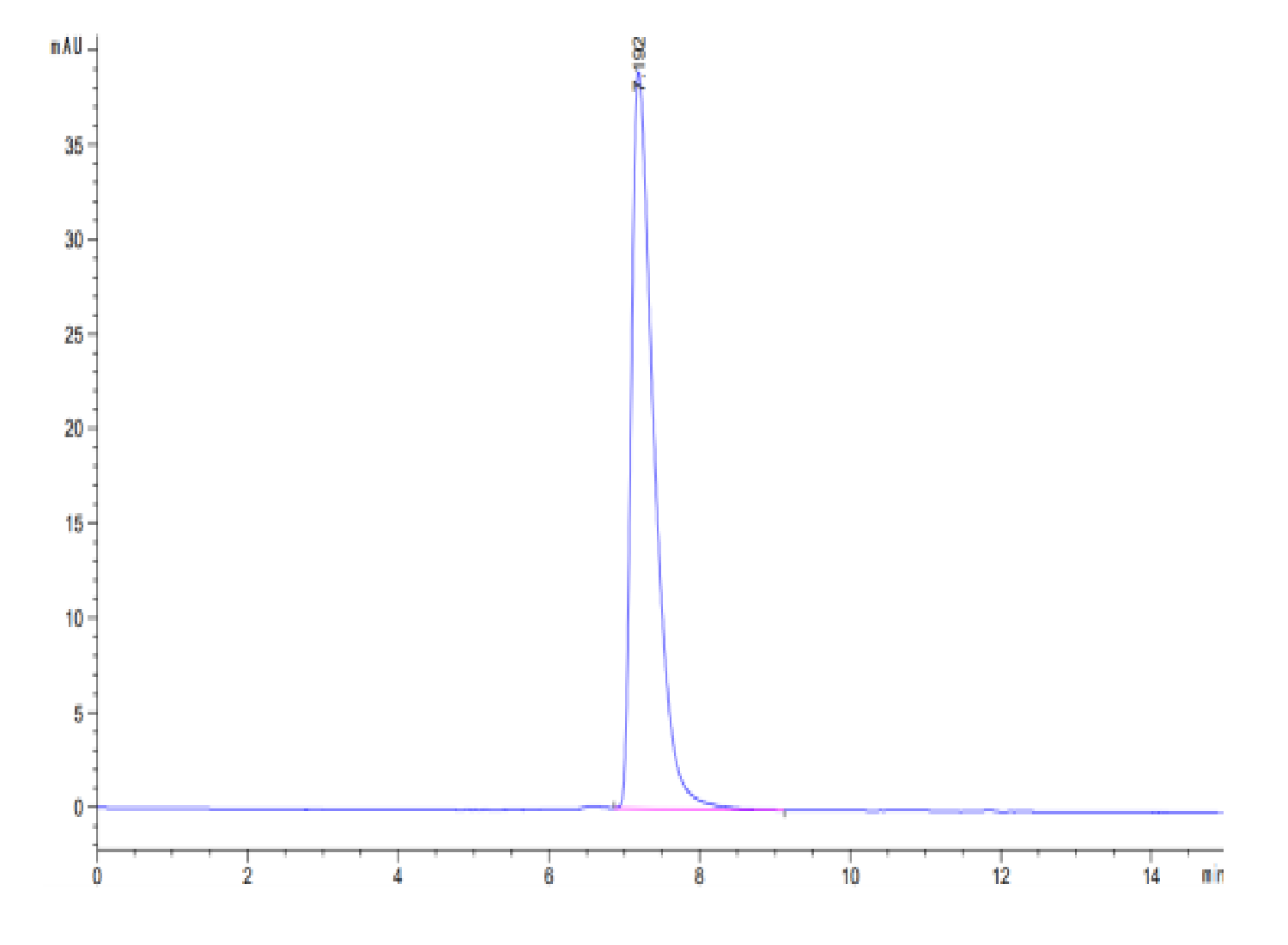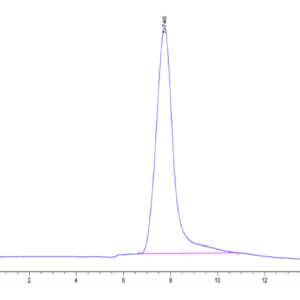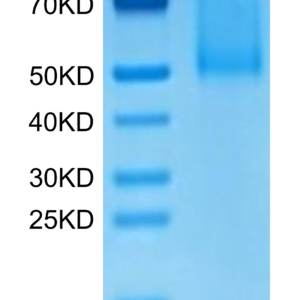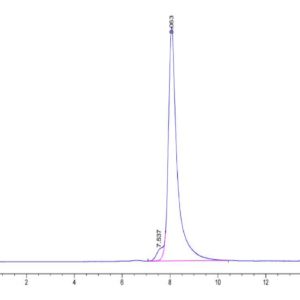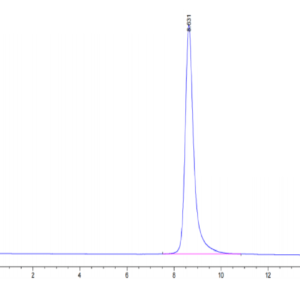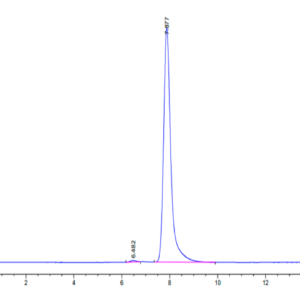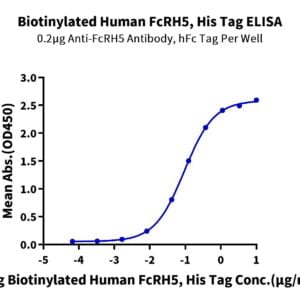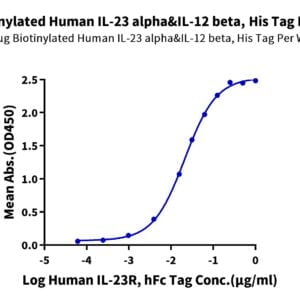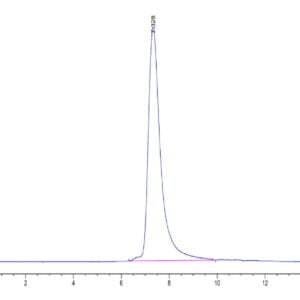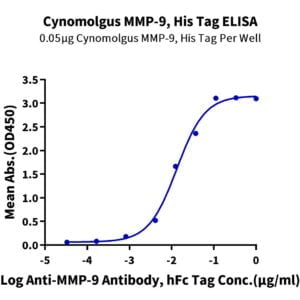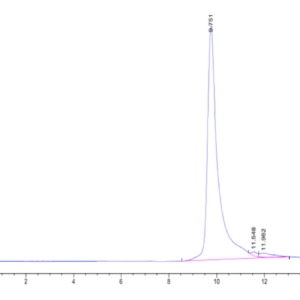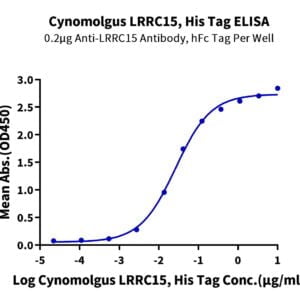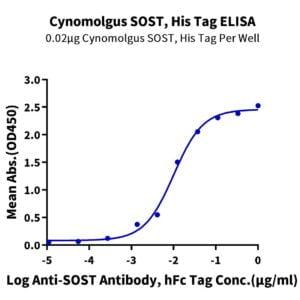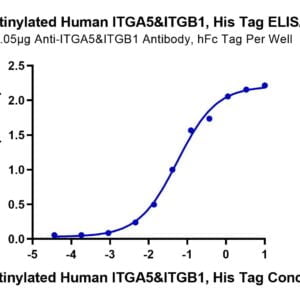| Weight | 1 lbs |
|---|---|
| Dimensions | 9 × 5 × 2 in |
| accession | P13591 |
| express system | HEK293 |
| product tag | C-His |
| purity | > 95% as determined by Tris-Bis PAGE;> 95% as determined by HPLC |
| background | Neural Cell Adhesion Molecule 1 (NCAM-1), a multifunctional member of the immunoglobulin superfamily, is expressed on the surface of neurons, glia, skeletal muscle, and natural killer cells. NCAM-1 has been implicated as having a role in cell-cell adhesion, involved in development of the nervous system, and for cells involved in the expansion of T cells and dendritic cells which play an important role in immune surveillance. |
| molecular weight | The protein has a predicted MW of 78.48 kDa. Due to glycosylation, the protein migrates to 95-115 kDa based on Tris-Bis PAGE result. |
| available size | 100 µg, 500 µg |
| endotoxin | Less than 1EU per μg by the LAL method. |
Human NCAM-1/CD56 Protein 2780
$315.00 – $1,050.00
Summary
- Expression: HEK293
- Functional: Yes (ELISA)
- Amino Acid Range: Leu20-Gly718
Human NCAM-1/CD56 Protein 2780
| protein |
|---|
| Size and concentration 100, 500µg and lyophilized |
| Form Lyophilized |
| Storage Instructions Valid for 12 months from date of receipt when stored at -80°C. Recommend to aliquot the protein into smaller quantities for optimal storage. Please minimize freeze-thaw cycles. |
| Storage buffer Shipped at ambient temperature. |
| Purity > 95% as determined by Tris-Bis PAGE |
| target relevance |
|---|
| Neural Cell Adhesion Molecule 1 (NCAM-1), a multifunctional member of the immunoglobulin superfamily, is expressed on the surface of neurons, glia, skeletal muscle, and natural killer cells. NCAM-1 has been implicated as having a role in cell-cell adhesion, involved in development of the nervous system, and for cells involved in the expansion of T cells and dendritic cells which play an important role in immune surveillance. |
| Protein names Neural cell adhesion molecule 1 (N-CAM-1) (NCAM-1) (CD antigen CD56) |
| Gene names NCAM1,NCAM1 NCAM |
| Mass 9606Da |
| Function This protein is a cell adhesion molecule involved in neuron-neuron adhesion, neurite fasciculation, outgrowth of neurites, etc.; (Microbial infection) Acts as a receptor for rabies virus.; (Microbial infection) Acts as a receptor for Zika virus. |
| Catalytic activity #N/A |
| Subellular location [Isoform 1]: Cell membrane; Single-pass type I membrane protein.; [Isoform 2]: Cell membrane; Single-pass type I membrane protein.; [Isoform 3]: Cell membrane; Lipid-anchor, GPI-anchor.; [Isoform 4]: Cell membrane ; Lipid-anchor, GPI-anchor .; [Isoform 5]: Secreted.; [Isoform 6]: Secreted . |
| Structure (Microbial infection) Interacts with rabies virus glycoprotein.; (Microbial infection) Interacts with Zika virus envelope protein E.; Interacts with MDK. Found in a complex with SLC39A6, SLC39A10 and with NCAM1; this complex controls NCAM1 phosphorylation and integration into focal adhesion complexes during epithelial-tomesenchymal transition. Interacts with synaptic plasticity regulator PANTS. |
| Post-translational modification Polysialylated at Asn-459 and Asn-488 by ST8SIA2 and ST8SIA4 (PubMed:28810663). Polysialylation modulates cell interactions by confering both attractive and repulsive properties that are highly regulated by ST8SIA2 and ST8SIA4 (PubMed:28810663). Polysialylation is formed on a-2,3-linked sialic acid of core glycans (PubMed:9774483). |
| Target Relevance information above includes information from UniProt accession: P13591 |
| The UniProt Consortium |
Data
Publications
Publications
| pmid | title | authors | citation |
|---|---|---|---|
| We haven't added any publications to our database yet. | |||
Protocols
| relevant to this product |
|---|
Documents
| # | ||
|---|---|---|
| Please enter your product and batch number here to retrieve product datasheet, SDS, and QC information. | ||
